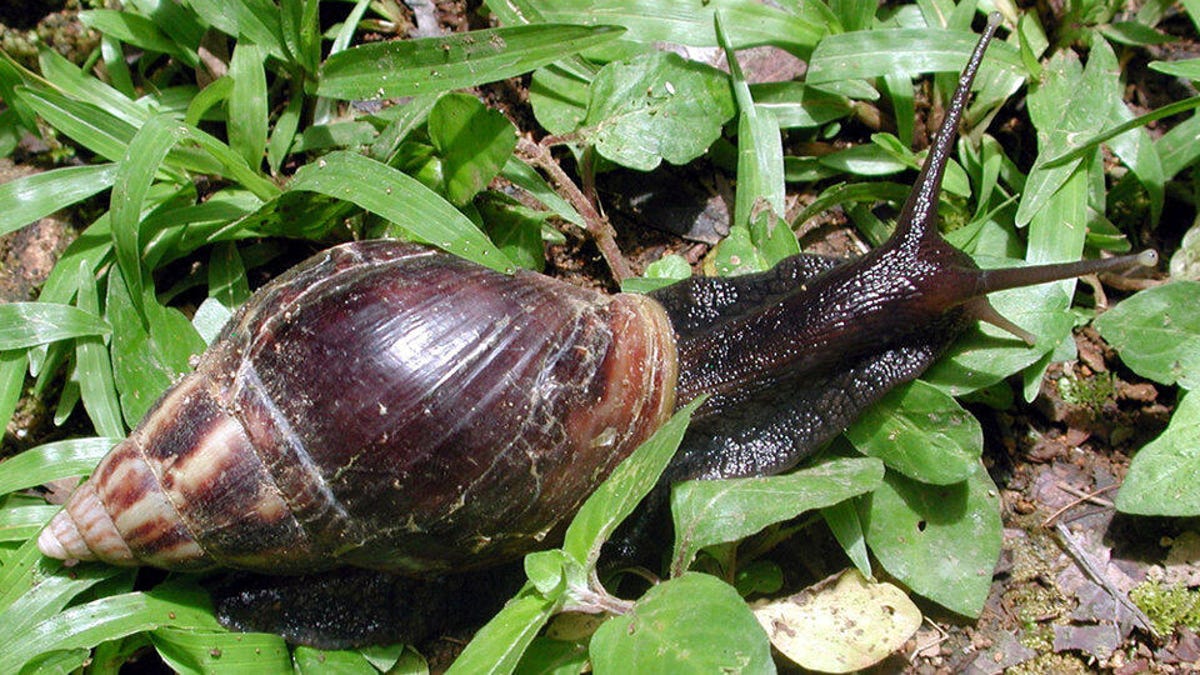Giant Concrete-Eating Snails Trigger Florida Quarantine
"One of the most invasive pests on the planet" is back like a bad dream to haunt Florida once again.
It sounds like a horror movie. Night of the Giant Snails! Stucco-snacking, disease-carrying mollusks invade Florida in 3D! But it's real. Florida issued a quarantine order after the June 23 confirmation of the giant African land snail (known as GALS) in Pasco County.
Snails in general seem like slow, relatively harmless, plant-snacking animals, but the GALS is on another level. The US Department of Agriculture describes the snail as "one of the most invasive pests on the planet, causing agricultural and environmental damage wherever it is found" (PDF link). It can reach more than 7 inches (18 centimeters) in length, lay thousands of eggs during its lifespan and can travel by clinging to vehicles and trash.
Giant African land snails can damage agricultural crops and buildings.
In other bad news, the snail can carry salmonella and a parasite called rat lungworm that's been known to cause meningitis in humans. The Florida Department of Agriculture and Consumer Services, or FDACS, cautions that people must wear gloves and follow proper protection and sanitation rules when handling the mollusks.
The quarantine for part of Pasco County calls for nurseries, solid waste facilities, trash haulers and landscapers to abide by certain conditions, including reporting snail detections, applying pesticides and allowing inspection of equipment. The precautions are designed to prevent the spread of the snails.
Mary Yong Cong, a Florida Dept. of Agriculture scientist, holds a Giant African Snail in her Miami lab on July 17, 2015.
The snails are sometimes kept as pets, though the US prohibits importing or owning them. They have voracious appetites with a willingness to eat more than 500 different types of plants. If that's not hard-core enough, the snails will also eat stucco and concrete walls, as the FDACS warned in a 2013 PSA urging residents to report sightings of the invaders.
FDACS is surveying the area in Pasco County where the snails were found and began treatment with a snail bait this week. The organization is using metaldehyde, a pesticide that dehydrates the animals and kills them within days.
The state already eradicated the snails twice before, first in 1975 and then again in 2021. Each of those efforts took years to succeed. Will the third time be a charm? Florida hopes to repel the invasion once again and put an end to the latest sequel in this slime trail of horror.


